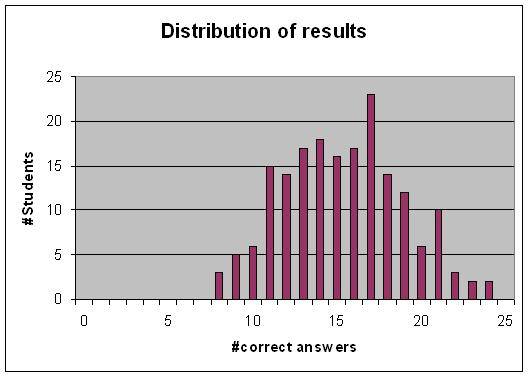University home »
Faculty of Science »
Department of Computer Science »
Courses » COMPSCI 372 FC » Tests and Exams »
Computer Science
COMPSCI 372 S1 C Exam
- Thursday, 7th June, 2.15pm (subject to change, please always check nDeva)
- Location: Lists with all exam venues will be displayed as usual outside various buildings in the morning of the day of your exam. Please make sure that you go to the correct room since otherwise the exam supervisor might refuse you entry to the room.
- Format: The exam is a 2 hour multiple-choice "closed book/no calculator" exam, i.e. you are not allowed to bring any notes or a calculator. There will be 50 questions worth 2 mark each. 21 questions will be about Burkhard's part and 29 questions about Reinhard's part. These questions will be in arbitrary order.
- IMPORTANT: In the exam you will get a teleform sheet in which you have to put your answers for the multiple choice questions. There will be four different versions of the exam - YOU MUST FILL IN YOUR VERSION NUMBER OF THE EXAM INTO THE TELEFORM SHEET - please ask the room supervisor if you are not totally sure how to do that.
- What to bring?
You must bring your student ID, a clean quality eraser and a dark medium hard or hard pencil. Be careful that you don't damage the teleform sheet. If you erase a wrong answer please make sure that you fully erase all black marks and that your answer sheet remains clean.
COMPSCI 372 S1 C Test
- Sample solution: version 1, version 2, version 3, version 4
- Remarks:
I would rate the test as having a medium difficulty and average length. Since it was a multiple choice test no writing was required, but many of the questions required quite a bit of thinking before starting writing. Here is the distribution of marks:
Overall the results are pretty much as you would expect, except that it's skewed too much to the lower end. I would have expected that most people can get about 30 marks: about 20 marks for the basic OpenGL, geometry and memorisation questions, and about 10 marks by using "informed guesses" for the more difficult questions.
Looking at version 1 of the test scripts:
Question 1-4: Easy, basic formulas from lecture notes
Question 5: Very hard! Note that the base of the object is a parallelogram and hence given by the length of axb. The volume is hence the height of the object times the area which can be computed by the dot product of axb and c since the height is equal to the length of c times cosine of the angle with the normal of the base area.
Question 6: Easy, use formula from lecture notes
Question 7: Difficult, but similar to previous year's tests
Question 8: In lecture note, but hard to remember such details. Can be derived by thinking about "what makes most sense".
Question 9: Anybody who did the assignment should know this ;-) Question 10-11: Easy, use formulas from lecture notes
Question 12: Similar to the question I did in the tutorial before the test
Question 13-14: Medium difficult. Check whether both points of a line segment lie on the same side. Note that we only need to know whether the sign of the distance, hence we can use the distance formula from the lecture notes without normalising it.
Question 15-20: Basic OpenGL questions
Question 21: Medium, the matrix is created by multiplying a translation matrix with a rotation matrix.
Question 22: Difficult, the rotation is a coordinate system transformation defiend by the vectors B-A and C-A. Question 23-25: Medium, standard transformation questions.Old exams, Exercises & Tips
- Some students like to ask for copies of old exams. As far as I know all old exams are available from the library. Please note that I never hand out sample solutions to exams. Please also note that COMPSCI 372 is a relatively new course (it started in 2002). Before that the university offered the course COMPSCI 370. Since the 370 course was 50% graphical user interfaces and 50% graphics you should expect more detailed questions about graphics in the COMPSCI 372 course.
You can download the 2001 exam of COMPSCI 370 here: 370Exam2001GraphicsPart.pdf and the 2002 exam here: 372FC_2002_Exam.pdf.
The library might have copies of 370FC exams of previous years. - Since some students might obtained the 2002-2006 tests and sample solutions from previous years I will publish them here in order to give everybody the same information:
- When writing an exam you are likely to be under time pressure. My colleague Richard Lobb has compiled some useful advice on how to write an exam.
- Some students like to ask for copies of old exams. As far as I know all old exams are available from the library. Please note that I never hand out sample solutions to exams. Please also note that COMPSCI 372 is a relatively new course (it started in 2002). Before that the university offered the course COMPSCI 370. Since the 370 course was 50% graphical user interfaces and 50% graphics you should expect more detailed questions about graphics in the COMPSCI 372 course.
-
Related Programmes




